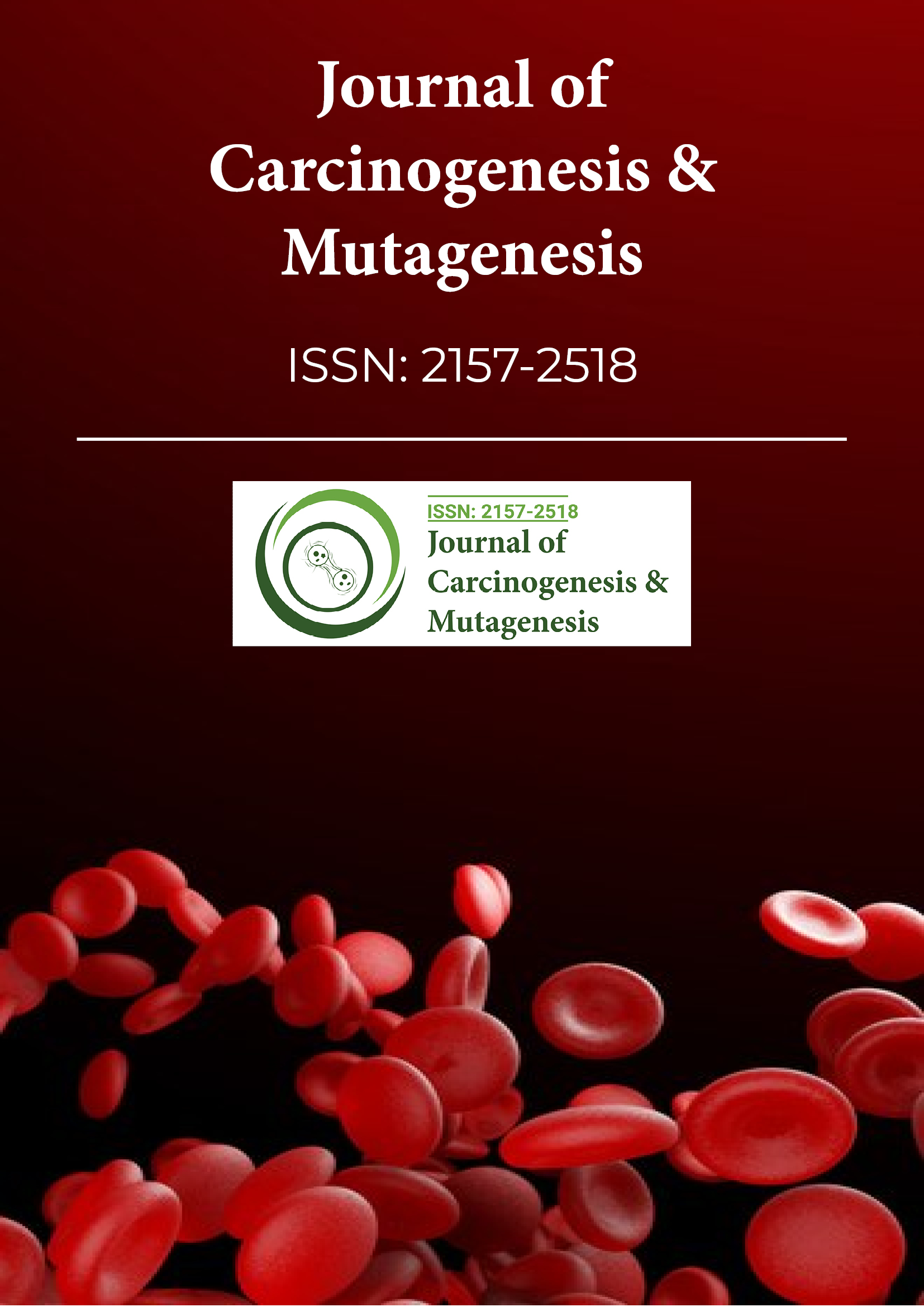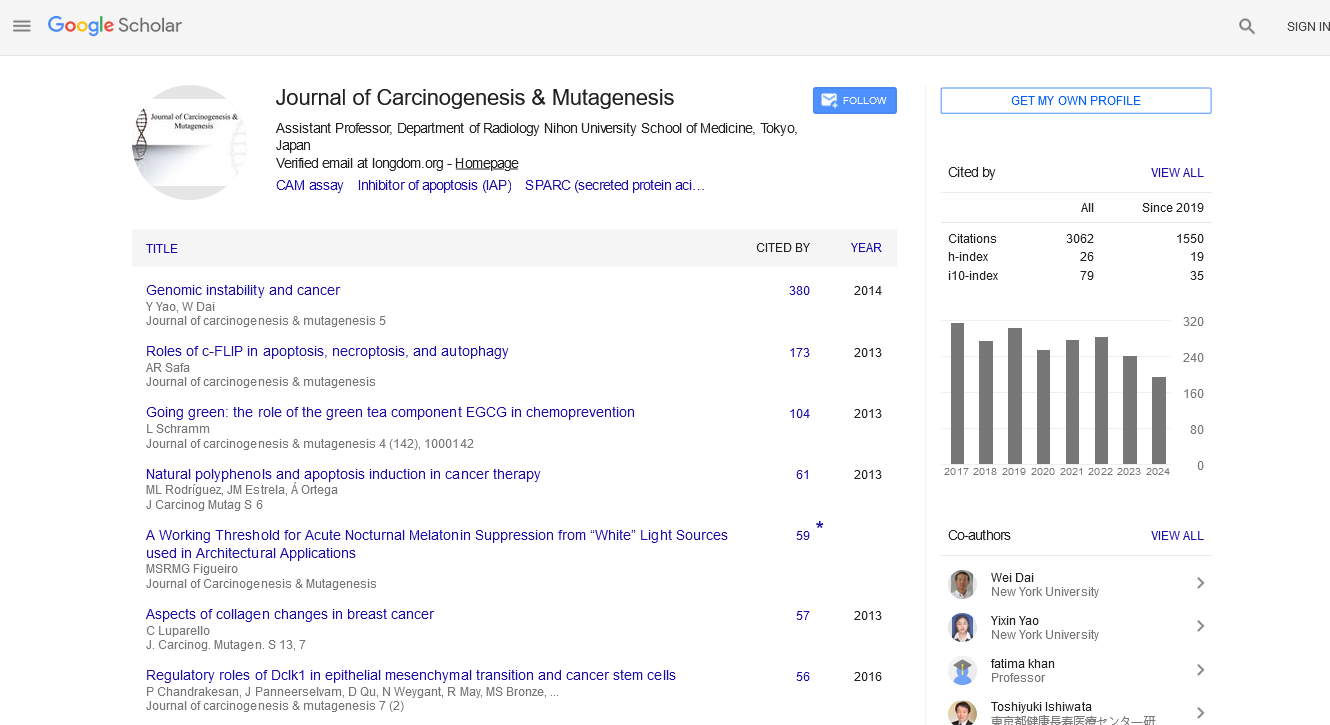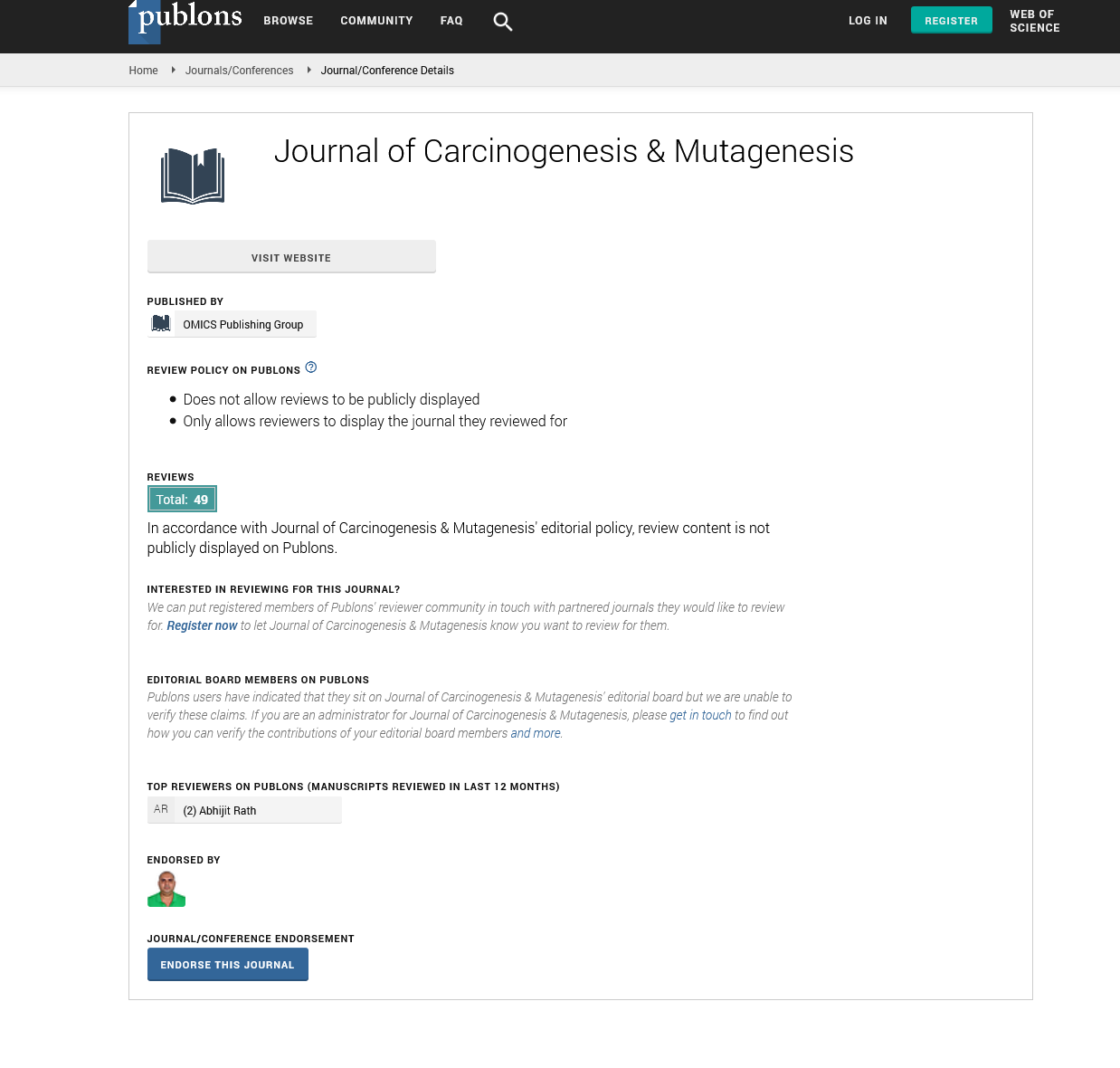PMC/PubMed Indexed Articles
Indexed In
- Open J Gate
- Genamics JournalSeek
- JournalTOCs
- Ulrich's Periodicals Directory
- RefSeek
- Hamdard University
- EBSCO A-Z
- OCLC- WorldCat
- Publons
- Geneva Foundation for Medical Education and Research
- Euro Pub
- Google Scholar
Useful Links
Share This Page
Journal Flyer

Open Access Journals
- Agri and Aquaculture
- Biochemistry
- Bioinformatics & Systems Biology
- Business & Management
- Chemistry
- Clinical Sciences
- Engineering
- Food & Nutrition
- General Science
- Genetics & Molecular Biology
- Immunology & Microbiology
- Medical Sciences
- Neuroscience & Psychology
- Nursing & Health Care
- Pharmaceutical Sciences
Perspective - (2023) Volume 14, Issue 3
Benefits of Computational Tools: Exploring the Potential of In Silico Mutagenesis and Docking Screening in Hydroxylation Research
Kevin Dzobo*Received: 29-May-2023, Manuscript No. JCM-23-22212; Editor assigned: 01-Jun-2023, Pre QC No. JCM-23-22212(PQ); Reviewed: 16-Jun-2023, QC No. JCM-23-22212; Revised: 22-Jun-2023, Manuscript No. JCM-23-22212(R); Published: 30-Jun-2023, DOI: 10.35248/2157-2518.23.14.417
Description
Hydroxylation is a crucial enzymatic process that involves the addition of a Hydroxyl group (-OH) to a substrate molecule. This modification plays a pivotal role in various biological processes, including drug metabolism, synthesis of signaling molecules, and post-translational modifications of proteins. In silico mutagenesis and docking screening are powerful computational tools used to investigate and predict the effects of specific mutations on hydroxylation reactions. This article aims to provide a comprehensive analysis of the application of in silico mutagenesis and docking screening in studying hydroxylation processes, exploring their benefits, limitations, and potential implications in drug discovery and enzyme engineering.
In silico mutagenesis
In silico mutagenesis involves the computational modeling of specific amino acid substitutions or mutations in the active site of an enzyme. By introducing mutations, researchers can simulate changes in the enzyme's structure and evaluate their impact on the hydroxylation reaction. This approach enables the prediction of the effects of mutations on enzyme-substrate interactions, catalytic activity, and selectivity.
Docking screening
Docking screening is a computational method that predicts the binding modes and affinities of small molecules to a target enzyme. In the context of hydroxylation reactions, docking screening allows researchers to evaluate the binding of substrates or potential inhibitors to the active site of the hydroxylase enzyme. By assessing the binding affinity and orientation of molecules, docking screening provides insights into the enzymatic reaction mechanism and the structural requirements for efficient hydroxylation.
Benefits of in silico mutagenesis and docking screening in hydroxylation studies
Prediction of mutational effects: In silico mutagenesis enables the rapid assessment of how specific mutations alter enzyme structure and function. Researchers can predict changes in substrate binding, catalytic efficiency, regioselectivity, and stereoselectivity, providing valuable insights into the impact of mutations on hydroxylation reactions.
Exploration of substrate specificity: Docking screening allows for the evaluation of the binding affinities and orientations of diverse substrate molecules within the enzyme's active site. This approach aids in understanding the determinants of substrate specificity and designing molecules with improved enzymatic recognition and hydroxylation activity.
Virtual screening of inhibitors: Docking screening can be employed to identify potential inhibitors of hydroxylases. By virtually screening large compound libraries, researchers can identify molecules that bind tightly to the active site, blocking the hydroxylation reaction. This information aids in the development of therapeutic agents targeting specific hydroxylase enzymes implicated in disease processes.
Rational design of enzyme mutants: In silico mutagenesis combined with docking screening can guide the rational design of enzyme mutants with improved hydroxylation activity or altered selectivity. By predicting the effects of specific mutations and assessing the binding of substrates, researchers can engineer enzymes to perform desired hydroxylation reactions more efficiently.
Limitations and challenges
Accuracy of computational models: The accuracy of in silico mutagenesis and docking screening depends on the quality of computational models used. Although significant progress has been made in improving these models, there are inherent limitations and approximations involved in simulating complex biochemical processes accurately.
Overcoming the sampling problem: Docking screening relies on sampling a vast chemical space to identify potential ligands or substrates. Overcoming this sampling problem remains a challenge, and the results obtained should be interpreted with caution.
Accounting for protein flexibility: Proteins are dynamic structures that can undergo conformational changes upon substrate binding. Accurate modeling of protein flexibility and capturing induced-fit effects during docking simulations is crucial for reliable predictions of hydroxylation reactions.
Validation and experimental confirmation: In silico predictions should be experimentally validated to ensure their accuracy and reliability. This necessitates experimental studies, such as site-directed mutagenesis, enzyme kinetics, and X-ray crystallography, to verify the predicted effects of mutations and binding modes.
Implications in drug discovery and enzyme engineering
The application of in silico mutagenesis and docking screening in hydroxylation studies has significant implications in drug discovery and enzyme engineering.
Drug design: The insights gained from docking screening can aid in the design of small molecule inhibitors or substratestargeting hydroxylase enzymes. This information assists in developing novel therapeutic agents for various diseases, including cancer, cardiovascular disorders, and metabolic disorders.
Enzyme engineering: In silico mutagenesis coupled with docking screening can guide the rational design of enzymes with improved hydroxylation activity, substrate specificity, or regioselectivity. This approach has potential applications in industrial biocatalysis, enabling the development of greener and more efficient processes for chemical synthesis.
In silico mutagenesis and docking screening are valuable computational tools that have enhanced our understanding of hydroxylation reactions. By predicting the effects of specific mutations and assessing substrate binding, these methods provide insights into the mechanisms, substrate specificity, and potential inhibitors of hydroxylase enzymes. While limitations exist, the integration of computational approaches with experimental validation offers significant potential in drug discovery and enzyme engineering, contributing to the development of novel therapeutics and environmentally friendly processes. Continued advancements in computational modeling techniques will further enhance the predictive power of in silico mutagenesis and docking screening, driving progress in the field of hydroxylation research.
Citation: Dzobo K (2023) Benefits of Computational Tools: Exploring the Potential of In Silico Mutagenesis and Docking Screening in Hydroxylation Research. J Carcinog Mutagen. 14:417.
Copyright: © 2023 Dzobo K. This is an open-access article distributed under the terms of the Creative Commons Attribution License, which permits unrestricted use, distribution, and reproduction in any medium, provided the original author and source are credited.


